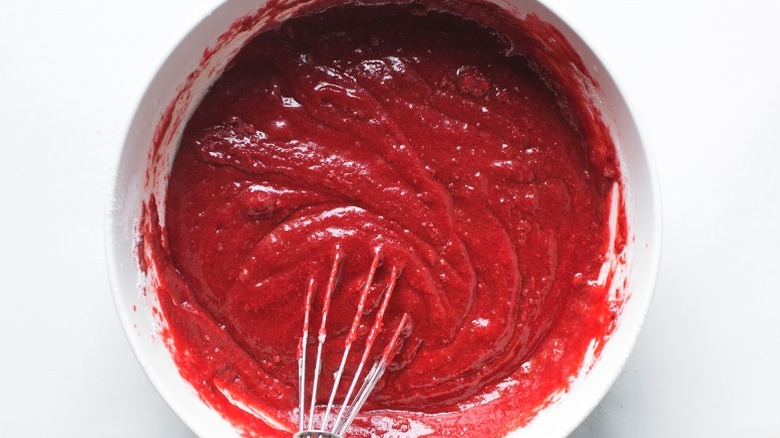The FDA Is Banning Red Dye No. 3, Here's What You Need To Know
On January 15, the U.S. Food and Drug Administration announced a major amendment to its policy on red dye used in food coloring and ingestible medicine. Under the new rules, Red No. 3 is officially banned as a matter of law, and food manufacturers using this dye have until January 15, 2027 to omit this ingredient from their products. The move cites the 1960 Delaney Clause of the Federal Food, Drug, and Cosmetic Act (FD&C), which states that food coloring can only be labeled as safe for commercial use if it passes 100% cancer-free detection tests in humans and animals.
The key word here is animals. In its announcement, the agency noted that studies have linked Red No. 3 as a carcinogen in laboratory rats because of the way it interacts with the male rat hormonal system. There isn't conclusive evidence to suggest that the dye is a current cancer-inducing risk for humans under government regulation. However, because the Delaney Clause covers both humans and animals, the FDA must comply by preventing the continued production of Red No.3 in food and drugs.
What to know about Red No.3
Red No.3, or erythrosine, is an artificial coloring agent made from petroleum, a naturally occurring substance found in the earth. This dye is relatively common, giving foods like candy and fruit juice a vibrant red or pink color. To find out if this ingredient is in your food, just check the nutritional label for terms like "FD&C Red No.3," "Red 3," or "erythrosine." There's no current USDA recall for products with Red No.3, so foods with the dye aren't immediate hazards that need to be taken off the shelves. If you wish to make adjustments to the products in your home, there's time to do it organically.
There are some foods in America that are banned in Europe and Oceania, and vice versa, and Red No.3 has long been a point of contention among different groups. The state of California outlawed it in 2023 due to a study linking artificial dyes to adverse neurobehavioral effects in children. In 2022, Consumer Reports, along with health and environmental organizations, filed a petition to remove the dye from the FD&C Act's approved list of edible color additives. The petition cited the same concerns over the lab rat study as the FDA, so it seems that this collective action is taking precautionary measures to protect public safety. This red dye ban comes on the heels of an FDA proposal to change nutritional labels, so stay tuned for more food health and safety updates.

